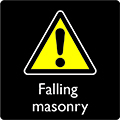Free Entry
Isleham Priory Church is the best example in England of a small Norman Benedictine priory church, surviving in a surprisingly unaltered state despite later conversion into a barn.
Isleham Priory was probably founded around 1100 by Count Alan of Brittany. Alan later gave the churches at Isleham and Linton to the Benedictine Abbey of St Jacut-sur-Mer in Brittany. As an enemy property during the wars with France, Isleham had a troubled history. It did not prosper or expand and in 1254 the monks were moved to Linton.
Read more about the history of the church.
Before You Go



Access: A 15cm high strip of wood across the bottom of the chapel door makes access for some wheelchair users very difficult. The floor in the chapel is a little uneven and there is one step up from the nave to the chancel.
Parking: There is on-street parking in front of the priory.
Opening Times: Most of the chapel exterior can be viewed at all time. To view the priory church interior during summer from 9am to 6pm or winter from 9am to 4pm, please collect the key from Mrs R Burton, 72 West Street, Isleham, CB7 5RA, a five-minute walk away.
Facilities: There are no facilities at the chapel but it is in the village of Isleham where there are shops and pubs.
Dogs: Assistance dogs only.
Plan a Great Day Out
The prehistoric flint mines of Grime's Graves are within a half hour drive north east of the priory. This grassy lunar landscape of 400 pits was dug over 5,000 years ago, and today you can descend nine metres into one of the mine shafts to see the jet-black flint.
Denny Abbey and the Farmland Museum is another former Benedictine foundation and is also half an hour's drive away from Isleham but to the west. Founded in 1159, it has been home to aged and infirm Knights Templars and to Franciscan nuns, and it was used as a farm from 1539 until the 1960s. All these changes are still traceable in the building. The neighbouring Farmland Museum tells the story of Cambridgeshire rural life.
